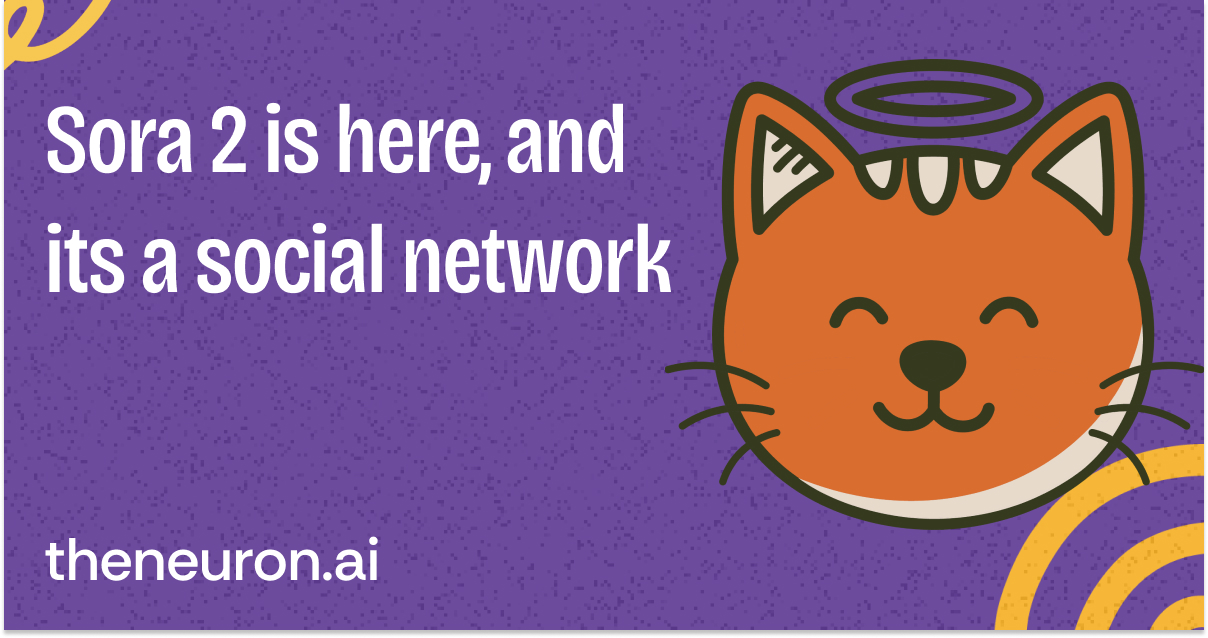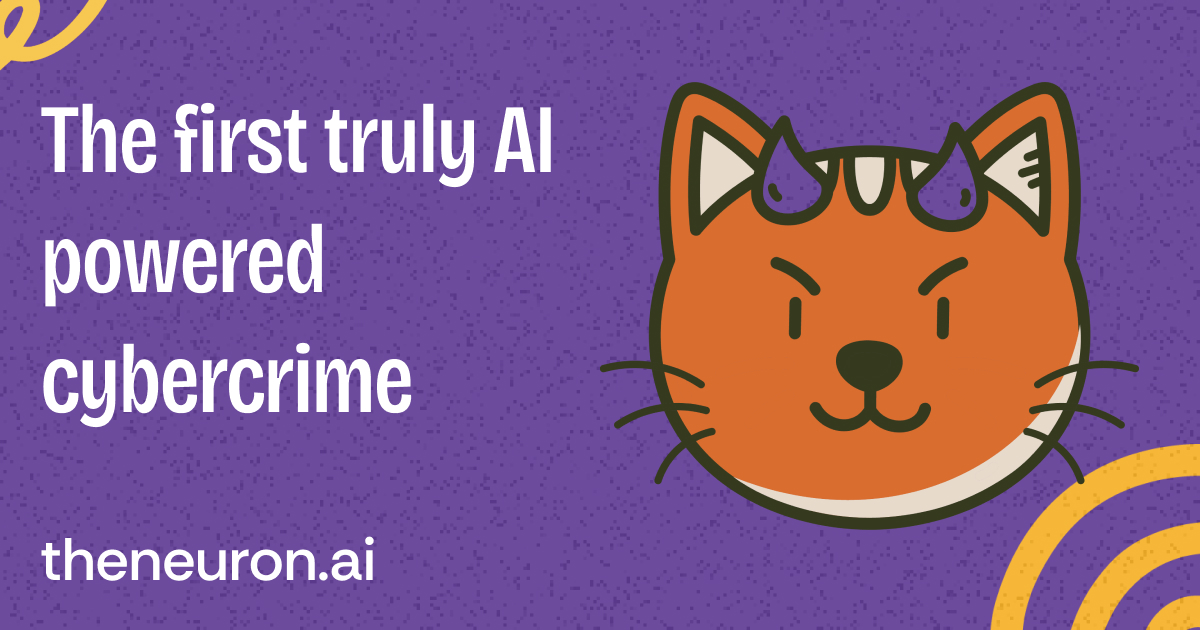Welcome, humans.
Remember when the coolest thing a robot could do was vacuum your floor? Those were simpler times.
Over the weekend, a developer plugged GPT-4o into Reachy Mini, an open-source robot from Pollen Robotics, and things got real.
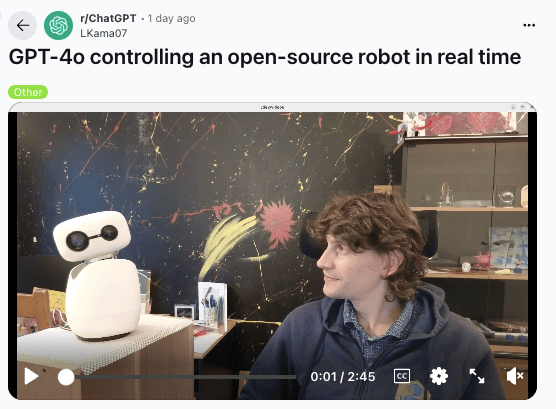
The little bot (which only costs ~$300 btw) can now analyze photos it takes, maintain eye contact during conversations, play chess, and recognize faces—all in real-time with barely any delay (read more on X here).
The wild part? It passed the mirror test. When Reachy Mini looked at its reflection, GPT-4o correctly identified that it was seeing itself mirrored. That's the kind of self-awareness that makes you wonder if we're one firmware update away from robots asking existential questions. At least it can't walk yet—so when the robot uprising begins, we'll have a head start!
Here’s what happened in AI today:
- OpenAI launched Sora 2 with a "cameos" feature turns you into video memes.
- Periodic Labs secured $300M for autonomous scientific experiments.
- Meta acquired RISC-V chip startup Rivos for in-house AI chip development.
- Google DeepMind's Veo 3 demonstrated emergent zero-shot vision abilities.
P.S: Speaking of AI self-awareness, we just dropped a new podcast episode with Microsoft AI CEO Mustafa Suleyman on why seemingly conscious AI is dangerous even though it's completely hollow inside. Click below to watch!

OpenAI Just Dropped Sora 2 (And a Whole New Social App)
NEWS BRIEF: Read our full recap about Sora 2 here.
Sora 2 launched Tuesday, alongside an iOS app that's basically “TikTok meets AI video creation meets your face on anything.” Wild in both terrifying and fun ways!

Watch the livestream demo here.
The app works more like a creation tool than a doomscroll machine. Remix other videos, browse a customizable feed with AI recommendations (where you instruct the algorithm in natural language), and maximize active creation over passive consumption.
What Sora 2 can do:
- Generate Olympic-level gymnastics with accurate physics.
- Follow complex multi-shot instructions maintaining world state.
- Create realistic soundscapes, dialogue, and effects automatically.
- Insert YOU into any video after one recording (what they call “cameos”)
Best demo: this video from OpenAI researcher Gabriel Peters showing Sora 2 launch day behind the scenes.
Cameos is the killer feature. Record yourself once, drop into any AI scene with accurate appearance and voice. OpenAI tested it internally—people made new friends because of it. It looks fun enough that we’d even consider uploading our likenesses, despite the very real privacy concerns there.
Luckily, OpenAI went HARD on safety. Every video includes visible watermarks plus C2PA metadata. Only you control your cameo: decide who uses it (only you, friends, approved users, or public) and revoke access anytime (even delete others' content). There’s also stricter teen limits, parental controls via ChatGPT, and feeds won't show teen profiles to adults.
Overcoming the creepiness of uploading yourself is the #1 adoption barrier to this in our opinion. We'll see if their techniques convince others it’s worth it (for the lolz).
Access: Rolling out in US/Canada via invite system (sign up in-app). Initially free with generous limits. ChatGPT Pro users get a higher-quality Sora 2 Pro. API coming soon, while Sora 1 Turbo stays available.
Our take: As we wrote on Monday, between Pulse and Sora 2, OpenAI's trying to build better social networks. Unlike today’s addictive and “engagement enragement” driven algos, Sora 2 provides more algorithmic control (choose “relaxing content” or “animals only”). Plus, they’re turning everyone into creators/remixers (you don’t have to even buy a ring light or get over your stage fright to participate!)
As Roberto Nickson said: Sora 2 is a “multi-player meme creation machine”, and that could be exactly what makes it work. If it takes off, Sam Altman predicts a “cambrian explosion” for creativity… or maybe even enough to win over a few more AI skeptics…

FROM OUR PARTNERS
Win BFCM With AI That Knows Ecommerce (& 50 Prompts!)
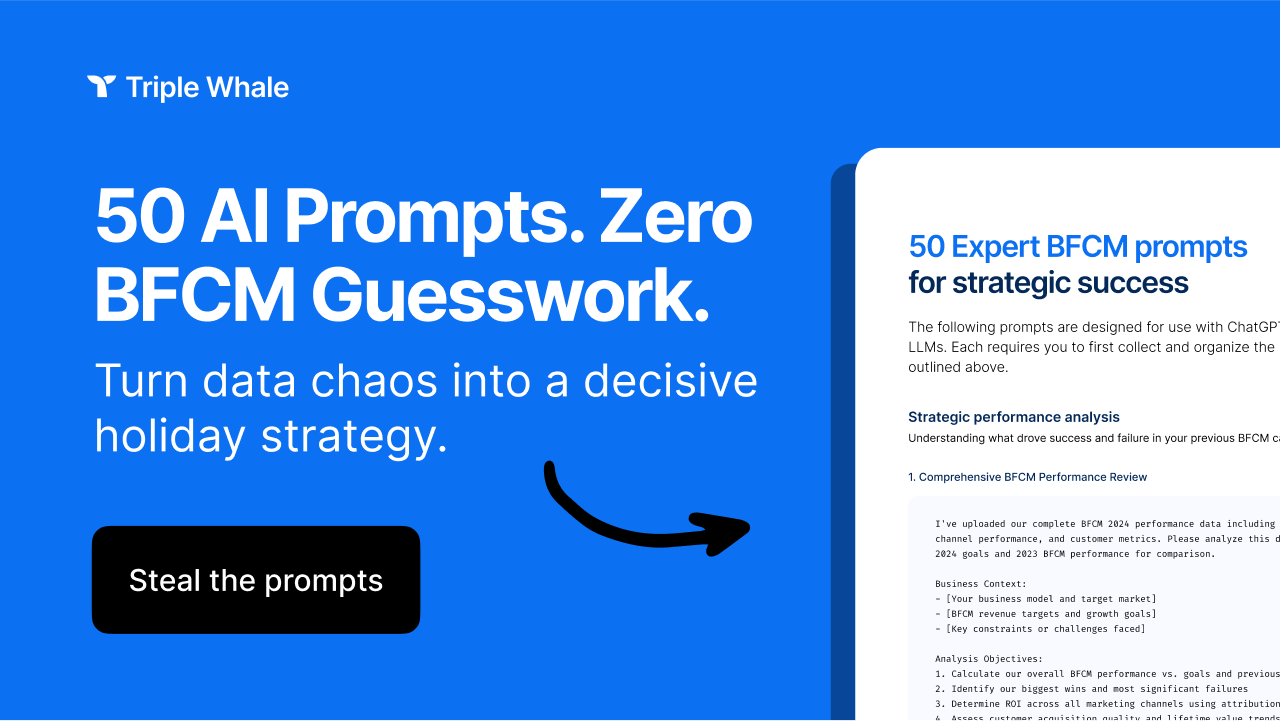
Master every click, cart, and customer journey. Triple Whale’s new guide equips you with 50 AI prompts that turn overwhelming BFCM data into clear, actionable insights for peak holiday profitability.
Download it now to learn:
- Do’s and don’ts of BFCM LLM prompting.
- Step-by-step workflows, data preparation, and tips for deeper analysis.
- Automation hacks to scale faster.
Triple Whale’s Moby Agents transform BFCM performance with AI built for ecommerce. Get 50 prompts that save you hours of manual analysis, help catch issues before they hurt revenue, and reveal insights no human could spot.

Prompt Tip of the Day
Anthropic just dropped a guide on “effective context engineering,” and the headline point is this: “Stop cramming everything into your AI prompts.” This is a great blog if you want to build your own agents!
The big idea: Context (what you share with the AI) is like your AI's working memory, and it has an attention budget. Stuff too much information in there, and it loses focus (just like us during 3pm meetings @__@ ).
Here's what actually matters when building AI workflows:
- Write prompts at the “right altitude.” Not too rigid (“if user says X, do Y”), not too vague (“be helpful”). Find the Goldilocks zone that gives clear guidance without micromanaging.
- Keep your toolset minimal. If you can't tell which tool an AI should use in a situation, neither can it. Clarity beats coverage.
- Use diverse examples, not exhaustive lists. Show the AI 3-5 great examples of what you want instead of listing every possible edge case.
Interestingly, Anthropic's Claude Code doesn't pre-load entire codebases into context. Instead, it uses tools to pull files “just in time”, like how you don't memorize your entire filing cabinet, you just remember where things are.
TL;DR? Treat context like a precious resource. Less is often more. We tried to break down all this advice on the website here. Check it out!

Treats to Try
*Asterisk = from our partners (only the first one!). Advertise in The Neuron here.
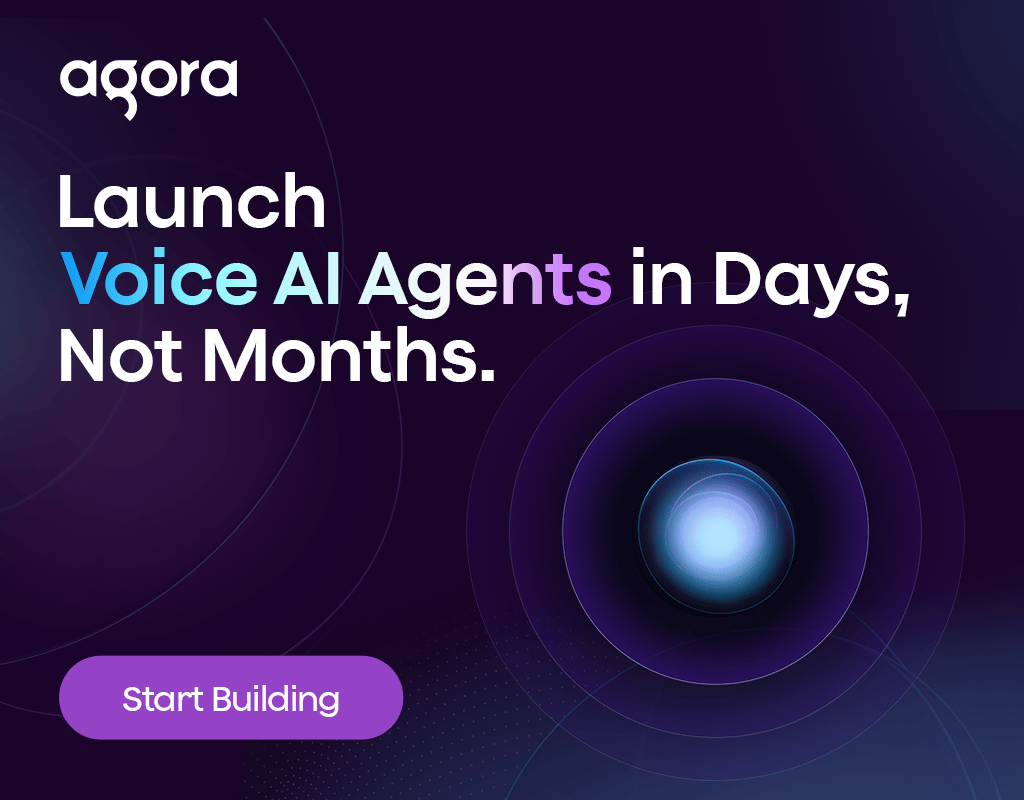
- *Skip the complexity. Agora’s APIs make it easy to add real-time voice AI to any app or product. Build agents that listen, understand, and respond instantly. Start building your agent.
- Sculptor runs multiple Claude Code agents at the same time in isolated sandboxes, so they can all build features in parallel without breaking each other's work or accidentally deleting your files.
- Granola (note-taker app) now lets you create reusable slash commands for your meeting notes, so you can instantly summarize, extract action items, or format content across all your meetings.
- Alex conducts thousands of automated job interviews daily for Fortune 500 companies, reducing initial screening time by up to 80%.
- Opera Neon is an agentic browser that completes your complex web tasks, from coding and building websites to research and shopping. while keeping your data private on your device—paid only ($19.99/month).
- Floutwork is another new agentic browser that combines your work apps and tasks in one distraction-free browser with AI scheduling ($12/month).

Around the Horn

IDK what’s more fun… trying to pick where to sit on this plane full of influential Silicon Valley / AI people, or reading the comments from the actual “influential Silicon Valley / AI people” reacting to their seating arrangements and trying to renegotiate where they want to sit.
- Microsoft announced three security products working together: Sentinel (a platform that unifies your 45+ fragmented security tools with AI-powered attack path visualization), Security Copilot (a no-code builder for custom AI security agents), and Security Store (a marketplace to buy and deploy security solutions).
- Google rolled out AI-based ransomware protection for Drive for Desktop that suspends syncing after detecting attack patterns and enables quick restoration.
- Periodic Labs secured $300M seed funding, potentially the largest in seed history, to build AI systems that autonomously conduct scientific experiments.
- Meta acquired Rivos, a RISC-V chip startup, to accelerate its in-house AI chip development and reduce reliance on external suppliers like Nvidia.
- Vercel secured $300M in funding at a $9.3B valuation, with its AI development tool v0 attracting 3.5M users.
- Google DeepMind demonstrated that Veo 3 shows emergent zero-shot abilities across diverse visual tasks, suggesting video models are becoming vision foundation models similar to how ChatGPT and similar AI became language foundation models. (which some estimate could be worth $100T).

FROM OUR PARTNERS
Master AI in 16 hours – the in-demand skill for 2025 (Limited time Offer)

Outskill's 2-Day LIVE AI Sprint (rated 9.8/10) teaches you to build AI agents that reclaim 20+ hours weekly and launch your $10K+ consulting business.
Usually $895, now FREE—pre-Halloween sale 🎃. Unlock $5100+ in bonuses.
Join in now, (they have limited free seats!)

A Cat’s Commentary
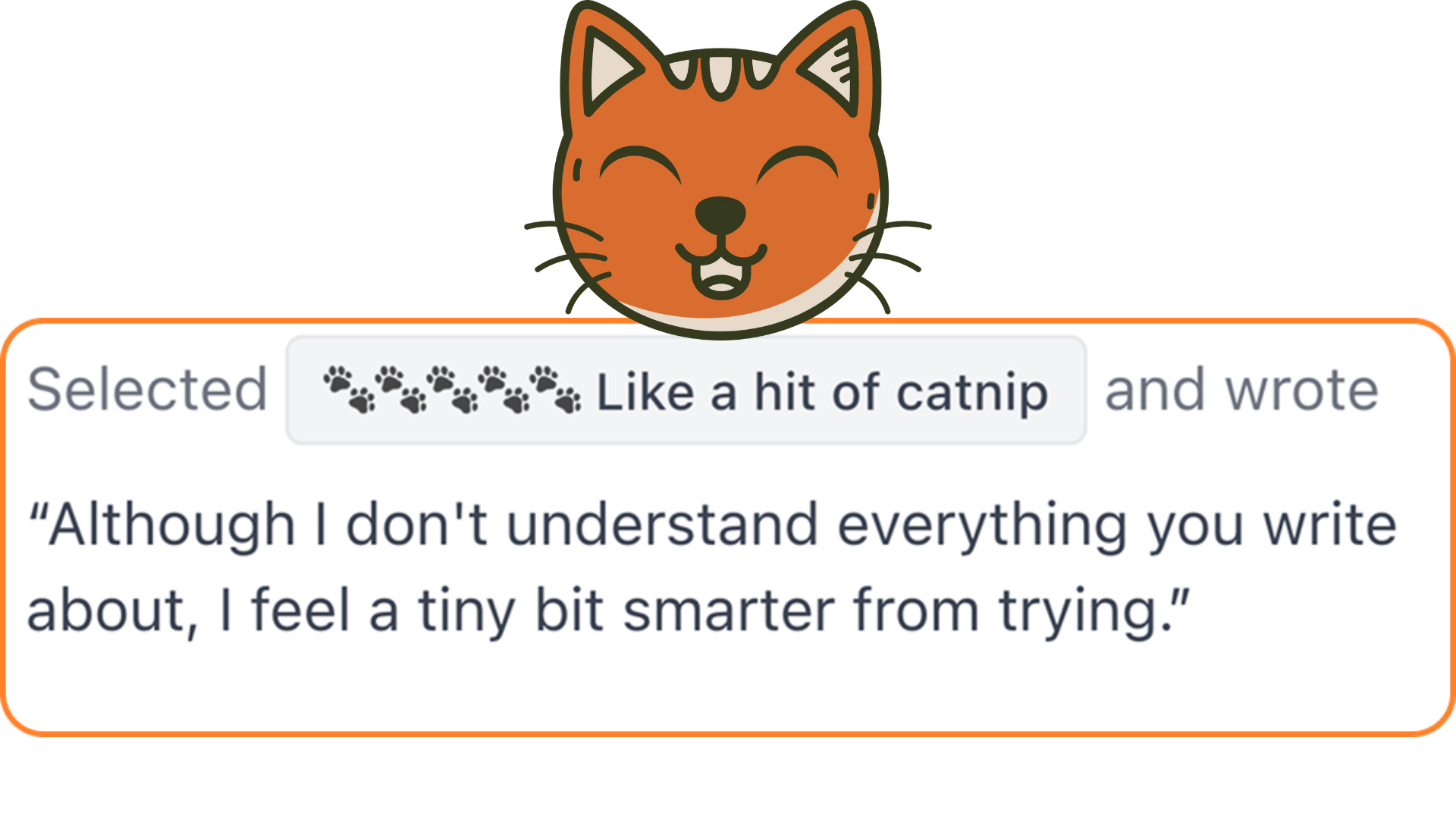


.jpg)

.jpg)


